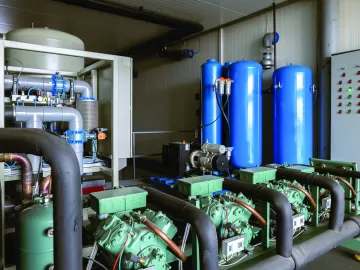Parker Hannifin Creates New Gas Separation and Filtration Division
Critical applications — such as semiconductor manufacturing, food processing and automobile spray finishing — require high quality, clean compressed air. Otherwise, those manufacturing facilities are doomed to costly rework, product recalls and a tarnished reputation.
“In semiconductor manufacturing, a small particle can ruin one of the die on a multi-die semiconductor wafer,” explained Dan Ryan, Engineering Manager, Parker Hannifin Corporation – Gas Separation and Filtration Division. “Even when it comes to things like painting automobiles, a few small, invisible particulates, depending on the makeup of them, can actually cause a visible flaw in the paint job.”




